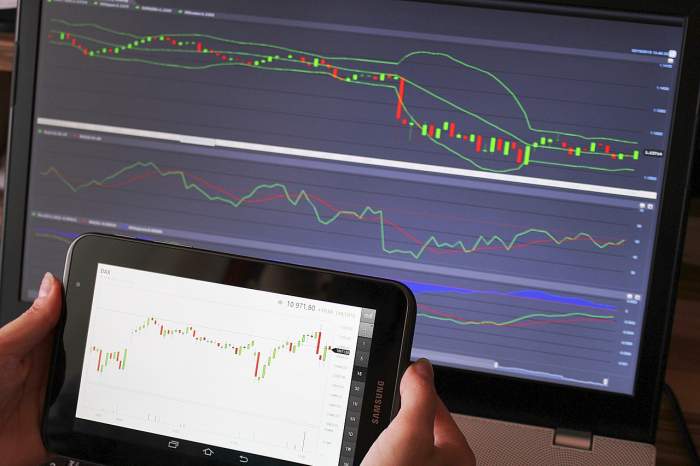
Contract-for-difference (CFD) trading is a buying and selling of a derivative product that allows speculation on thousands of shares, indices, forex, cryptocurrencies, commodities, and other financial markets without assuming ownership of any underlying assets. Instead of buying and selling the actual assets, you buy or sell units of an instrument. You exchange the difference in an asset’s price between the points when the contract is opened and the price when it is closed, and your profit and loss depends on how accurately you predict this change.
In this way, CFD Online Trading lets you speculate on and profit from both positive and negative changes in price. Suppose you want to benefit from a falling market. Instead of buying (“going long”), you can sell an instrument (“go short”). By opening a CFD position and going short, you can profit when a market drops in price.
Another advantage of CFD trading is that no matter the type of market or instrument that you’re interested in trading, you can use the same platform to open your position. Most major CFD providers offer a wide range of global markets and instruments. Trading in international markets is much simpler and involves lower costs. Minimum contract size is also relatively small compared to other financial instruments, which provides a very low entry threshold.
CFD trading is also usually more tax-efficient than other forms of trading. Because you don’t assume ownership of actual assets, you might not have to pay some kinds of duty (like stamp duty). You usually don’t have to pay exchange fees either.
CFD leverage and margins
CFDs can be traded with leverage, which is also known as “trading on margin”. This means that your initial commitment for a large position can be a small fraction of its full cost, but the position’s full price will be used to calculate your profit or loss. For example, if you purchase 100shares of stock valued at €2, and if the share price for that stock rises by 10 percent to €2.20, then before paying commission and other applicable fees, you would normally earn a 10 percent profit of €20 on an investment of €200. On the other hand, if you had opened a position for 100 CFDs against the same stock at 10:1 leverage, you would only need to deposit €20 for your trade, and your profit before commission and fees would be 100%.
However, it is important to know that this flexibility and larger market exposure also leaves you susceptible to a magnified risk of loss.Furthermore, it is also possible for your loss to greatly exceed your deposits. If you purchase shares and their price drops by 50%, then you lose half of the funds you invested. On the other hand, if you open a position for CFDs at 10:1 leverage and their price drops by half, then you will lose five times the funds you committed to the trade.
The margin is the loan that you receive to invest in leveraged CFD trading, typically against your deposited funds. In addition to this initial or “deposit” margin, you might also need a maintenance or “variation” margin if your trade is at risk of incurring losses in that exceed your deposits. In this case, you may receive a margin call and be asked to add more funds to your account. Failure to do so may lead to your position being closed and the realization of losses.
Other factors can also affect trading CFDs on margin, like the volatility of the particular market or instrument, the size of the position you would like to open, and whether your trade will use any safeguards like a guaranteed stop. Depending on these factors, you may be requested to provide as little as 0.5% margin for smaller trades of very low-risk instruments, or as much as 25% margin for larger trades of very high-risk instruments. CFDs usually provide higher leverage than other forms of trading.
How CFDs work
To understand the detailed workings of CFDs, you need to understand spreads, deal sizes, and profit and loss.
Spread
The buy price of a CFD is slightly higher than its current market price, while its sell price is slightly lower. The difference between these prices is called the spread. These prices typically include the cost to open the CFD position, except for share CFDs, which are based on commission.
If the spread is narrower, then you begin to make a profit or incur a loss with a smaller change in price. Other trading costs that might apply to your trades include holding costs that are applied overnight after the trading day is over, and market data fees for viewing price data for share CFDs.
Deal size
Similar to the way assets are traded on the market, CFDs are traded in lots of a standard size. Non-standard deal sizes (“odd lots”) are typically not supported in CFD trading. For example, both commodities trading contracts and CFD contracts for coffee are for 37,500-pound lots. Share CFD contracts usually represent one share of the relevant company. A few things to consider include the size of your position and the volatility of the market or instrument you wish to trade. The larger your position, the larger the margin you will need to pay. The more volatile the instrument, the larger your potential profit or loss.
Profit and loss
CFD trading profit or loss is calculated by multiplying the number of contracts by the positive or negative difference between the contracts’ opening and closing price. Going back to our coffee example, suppose you bought 1,000 coffee CFDs each valued at $107. If the contract value increases to $120 at the time it is closed, then your profit is:
1,000contracts x ($120 -$107) = 1,000 x $13 = $13,000
As another example, if DAX30 CFD contracts are valued at €25 per point, here’s how you would calculate losses for 50 contracts on a drop from 11,300 to 11,270:
50 contracts x €25 x (11,270 – 11,300) = €1,250 x (-30) = -€37,500
Why should I start investing in CFDs right now?
As said before,since CFDs are derivatives, they allow a trader a 100% participation in the price movement of underlyingassets without assuming ownership of those assets. Also, the ability to trade CFDs on margin makes them a resource-efficient way to invest, helping you use your depositsmore effectively. The transparent and trade-friendly fee structure of a CFD also allows you to trade cost-efficiently.
Because CFD trading allows you to go short, they are an excellent way to hedge against loss in the value of other investments. If you hold shares, for example, you can use CFDs to open a short position for the same stock to offset potential losses if the stock price drops.
At Bernstein Bank, for example, you can trade the German DAXindex from 1.0 points spread. With CFDs, the days of days of onlytrading long are over. The ability to go either long or short will immediately double your room for maneuver. Furthermore, CFDs are offered on all liquid asset classes and underlying assets. This huge potential for investment ideas provides flexibility to every trader.





